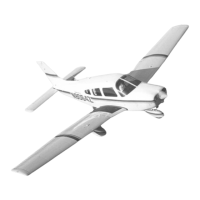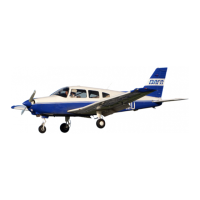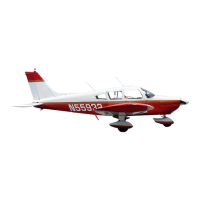PIPER AIRCRAFT, INC.
PA-28-161, WARRIOR III
MAINTENANCE MANUAL
PAGE 1
Nov 30/06
1J9
20-00-00
GENERAL
1. Description
This chapter contains general information pertaining to standard aircraft hardware installation and
removal practices.
For standard repair practices of a minor nature, refer to AC 43.13-1 (latest revision).
If non-destructive testing is needed after repair of 4130 steel, use a magnetic particle inspection method
such as Magnaflux.
Testing and inspecting of aluminum castings and machined aluminum parts may be done by the dye
penetrant method.
Usually, a good visual inspection with a 10X magnifying glass will show any damage or defect in a repair
that is of a significant nature.
2. Torque Wrenches
Torque wrenches should be checked daily and calibrated by means of weights and a measured lever
arm to make sure that inaccuracies are not present. Checking one torque wrench against another is not
sufficient and is not recommended. Some wrenches are quite sensitive as to the way they are supported
during a tightening operation. Any instructions furnished by the manufacturer must be followed explicitly.
When it is necessary to use a special extension or adapter wrench together with a torque wrench, a
simple mathematical equation must be worked out to arrive at the correct torque reading. Following is
the formula to be used: (Refer to Figure 1.)
T = Torque desired at the part.
A = Basic lever length from center of wrench shank to center of handle or stamped on wrench or
listed for that model wrench.
B = Length of adapter extension, center of bolt to center of shank.
C = Scale reading needed to obtain desired torque (T).
The formula: C =
A x
T
A + B
EXAMPLE: A bolt requires 30 foot pounds and a 3 inch adapter (one-quarter of a foot or
0.25’) is needed to get at it.You want to know what scale reading it will take on
a one-foot lever arm wrench to obtain the 30 foot pounds at the bolt.
C =
1 x 30
or C =
30
1 + 0.25 1.25
Remember, the 3 inch adapter must be projecting 3 inches straight along the wrench axis. In
general, avoid all complex assemblages or adapters and extensions of flex joints.

